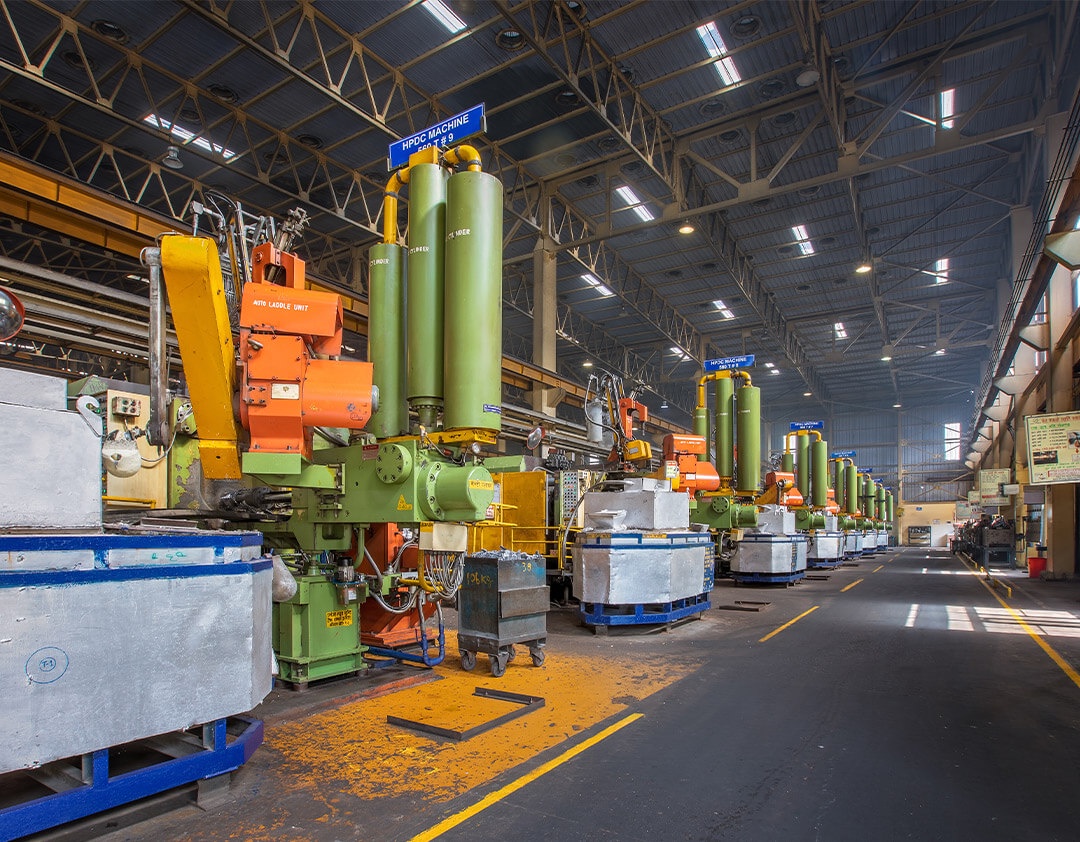With their unmatched precision, affordability, and versatility, aluminum cast have completely transformed the manufacturing sector. Among the different processes used, low-pressure casting, high-pressure casting, and gravity die casting are notable approaches, each with special benefits and uses.
To comprehend these procedures' complexities and importance in contemporary production, let's take a closer look at them.
- Low-Pressure Die Casting (LPDC)
In low-pressure casting, molten aluminum is injected under low pressure into a permanent mold that is usually constructed of steel. Excellent control over the casting process is provided by this approach, guaranteeing high-quality parts with few faults. The low pressure used produces better mechanical qualities and a smoother surface by minimizing turbulence and gas entrapment.
The capacity of low-pressure casting to produce thin-walled components and intricate geometries is one of its benefits. This method is useful for maintaining elaborate designs and precise tolerances on automotive parts, like engine blocks and wheels.
Low-pressure casting is also a better option for high-volume manufacturing since it allows for more effective production runs. This process is automated, which increases efficiency even further while preserving batch uniformity.
- High-Pressure Die Casting (HPDC)
High-pressure casting, commonly referred to as die casting, is an aluminum cast technique where molten aluminum is injected into a steel mold at a high pressure, in contrast to low-pressure casting. It is possible to produce complex items with outstanding surface polish and dimensional precision using this quick and powerful process.
Die casting is widely used in a wide range of industries, such as electronics, automotive, and aerospace since it can create components with precise dimensions and intricate designs. Because high-pressure casting is efficient and economical, it is frequently used in the manufacturing of engine components, transmission parts, and housings for consumer electronics.
Die casting also has the benefit of having short cycle times, which enables rapid turnaround and large production rates. Its attractiveness to manufacturers looking for more efficient production processes is further increased by the capacity to combine several characteristics into a single component.
- Gravity Die Casting (GDC)
GDC is the most traditional die-casting process. It’s still used in die-casting manufacturing sectoAluminum molten is poured into a metallic mold by gravity in a process known as gravity die casting, or permanent mold casting. Gravity die casting does not require the application of additional pressure for metal injection, in contrast to low-pressure and high-pressure casting. Rather, the melted metal enters the mold cavity as a result of gravity.
This process works effectively for creating moderately complex, medium-to-large-sized components. For small to medium-sized production runs, its affordability and ease of use make it the ideal option, particularly for components like heat sinks, pump housings, and valves. Comparing gravity die casting to sand casting, another popular aluminum cast technique reveals advantages in terms of decreased porosity and enhanced mechanical qualities. Moreover, shorter lead times and lower tooling costs are facilitated by the metallic molds' reusable design.
Aluminum cast techniques, such as gravity die casting, high-pressure casting, and low-pressure casting, are essential to contemporary manufacturing in a variety of industries like automotive and aerospace. With respect to accuracy, productivity, and affordability, every technique has unique benefits that meet a variety of component needs.
Endnote
Aluminum die-casting techniques continue to develop as a result of technological advancements and the growing demand for lightweight, high-performance materials. Rockman is a prominent name in this genre. This innovation pushes the limits of manufacturing capabilities and fosters creativity. Manufacturers can use these casting techniques to their advantage and produce high-quality items that satisfy shifting consumer needs by learning the subtleties of the industry.


No comments yet